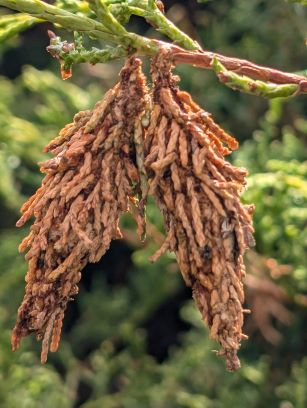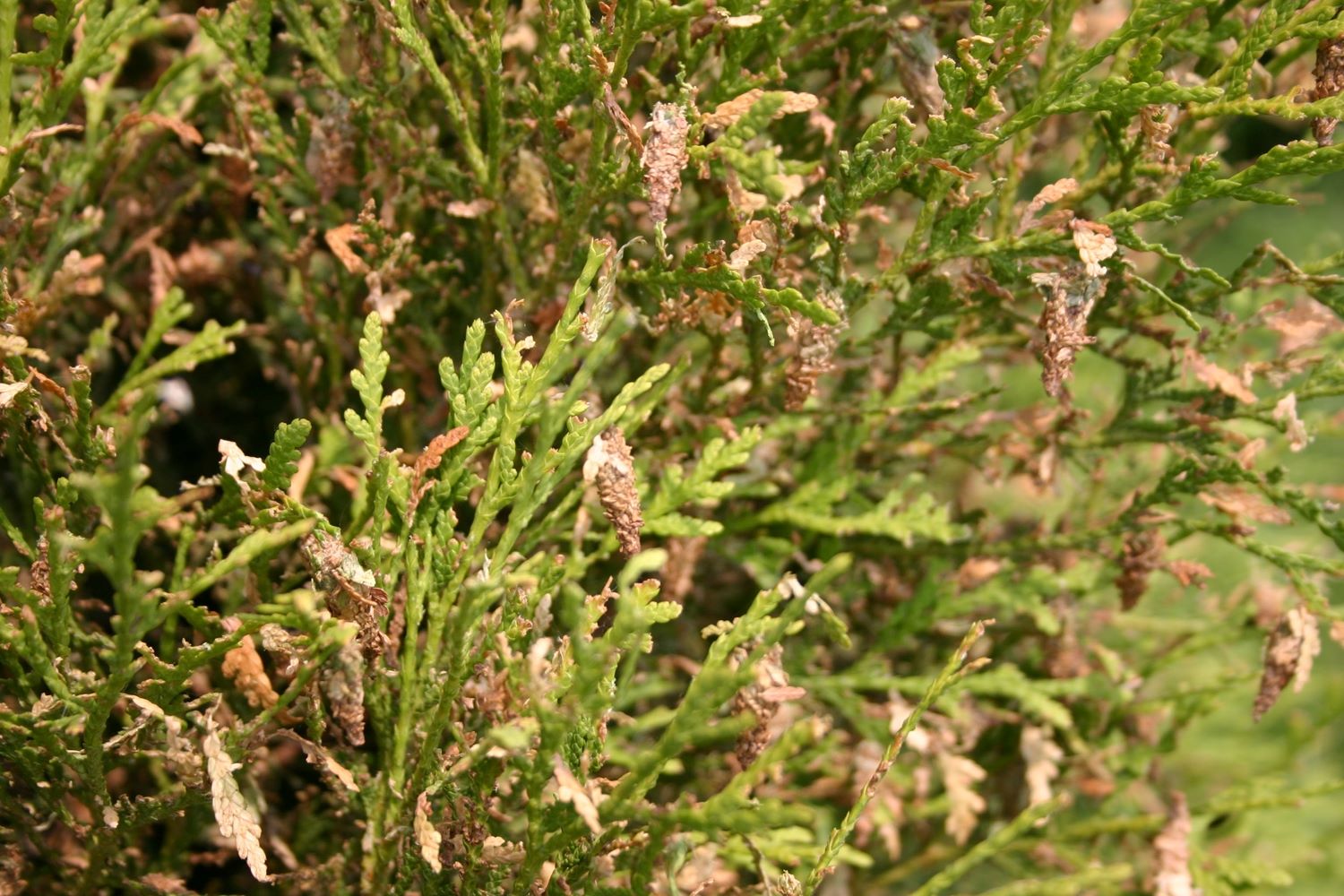Bagworms, Fall Control Technique
Return to Trees and Shrubs Agent Articles

As the growing season ends and the leaves begin to fall off the trees, you may notice leftover leaf materials and debris hanging off your trees and shrubs that look like miniature pinecones. Upon closer examination, you find silk is holding this baggie object together. What you are looking at is a bagworm cocoon, Thyridopteryx ephemeraeformis, and if you take a step back to view the whole tree, you will be introduced to a nightmarish scene: a tree covered in bagworm structures.
These critters have an insatiable appetite and can defoliate a fully-grown cedar tree. Perhaps you have seen the work of these insects in the parking lot of your local bank or department store. Lots of brown, dead leaf material under a bunch of exposed branches with no green on top. They are a big ornamental pest we see in the Metro every year. They can feed on various trees, shrubs, and other ornamentals in the landscape. The most devastating damage is found on evergreen species such as junipers and arborvitae. This is because the growing points for these plants are located at the tips of the awl or scale-like leaves. Once a branch has no green growing points left, that branch will not grow back.
Luckily, there are two times of the year when bagworms are completely exposed and can be controlled. In late spring, the larvae hatch from the eggs and fall from the cocoon the female prepared the following autumn. They start to crawl toward the food closest to them, and they begin chewing. At first, it is hard to notice them because of their size (1 mm), but as they get bigger, they start doing what their name suggests. They begin making a bag with silk around their bodies and place bits of foliage on the silk to help disguise them. This combination of dead plant material and silk is recognizable to anyone with juniper, spruce, or arborvitae.
The end of spring is the best time to control these insects as the eggs hatch. Applying a foliar pesticide with long residual potential during their feeding stage will significantly reduce the number of bagworms. However, it is about to be September, and this season's damage is already done. No chemical at this life stage will have the effect you are looking for. The method of control this late in the season is to do exactly what you think it is. Pull those suckers off. Gently.
Pulling the bags with the worms and immediately destroying them is an effective control method for the following spring. Destroying them by smashing or drowning them in soapy water guarantees that you limit the spring numbers. It might seem daunting at first, especially if you have a significant infestation on a large tree or shrub, but this method doesn’t have to be done all at once. The ones you don’t get today will be there tomorrow. This allows you to pick a few here and there until the eggs hatch in late May.
When pulling the bags off twigs on juniper and abortive, use caution to avoid inflicting more damage to the plant than necessary. The silk these worms cover themselves with and use to attach themselves to the host plant is very strong. Weak twigs and branches can break when trying to remove the bagworms.
If your tree or shrub looks like there isn’t much left anymore, spring insecticide treatment may be necessary. Females can lay 500-1000 eggs, which overwinter within each bag. Reducing the number of bags you see will be very important in limiting future damage to your tree or shrub.
Markis Hill, Turf and Ornamentals Horticulture Agent, 2024
Have questions? The Garden Hotline is staffed by trained EMG volunteers and Extension staff who will assist you with questions.
Phone: (913) 715-7050
Email: garden.help@jocogov.org
